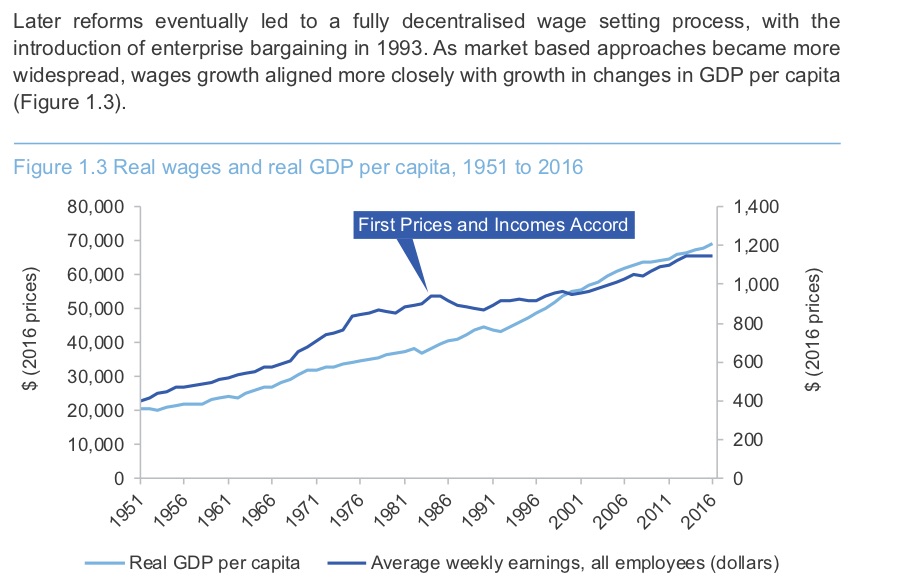There’s been a lot of discussion recently about stagnation in real wages and the decline of the labour share of national income. In a recent Senate Submission, I made the point that there is nothing surprising about this For the last 40 years, changes in labour market regulation have been almost uniformly anti-union and anti-worker, while public policy has been premised on the desirability of reducing wages. I saw an interesting (and, I suspect, largely unconscious) illustration of this in a recent report from the grandly-titled Office of the Chief Economists. Among the many benefits of economic reform, the report cited the following How does this relate to the wage share? When real wages are growing faster than GDP per person (and assuming a constant employment/population ratio,
Topics:
John Quiggin considers the following as important: Economics - General
This could be interesting, too:
John Quiggin writes Two problems with Modern Monetary Theory
John Quiggin writes Energy return: ratio or net value (revised)
John Quiggin writes A whirlpool of speculation around GameStop squeeze
John Quiggin writes WallStreetBets and financialised capitalism
There’s been a lot of discussion recently about stagnation in real wages and the decline of the labour share of national income. In a recent Senate Submission, I made the point that there is nothing surprising about this
For the last 40 years, changes in labour market regulation have been almost uniformly anti-union and anti-worker, while public policy has been premised on the desirability of reducing wages.
I saw an interesting (and, I suspect, largely unconscious) illustration of this in a recent report from the grandly-titled Office of the Chief Economists. Among the many benefits of economic reform, the report cited the following
How does this relate to the wage share? When real wages are growing faster than GDP per person (and assuming a constant employment/population ratio, which is reasonably accurate), the wage share of GDP is rising. When real wages are growing more slowly than GDP per person, as they have done for the past 25 years or so, the wage share is falling. Looking at the beginning and end points we can see that wage growth has been slower than GDP growth over the period as a whole So, we can restate the conclusion as
Under the labour market institutions that prevailed between 1951 and 1981, the labour share of income increased. Since then, thanks to the adoption of market based approaches, workers have lost all the ground that they gained in the postwar decades, and then some.
